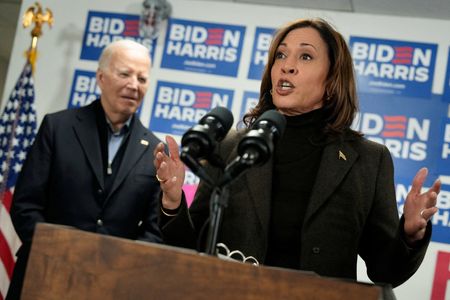As Vice President Kamala Harris approaches the end of her hypothetical 90-day timeline to deliver on her presidential campaign promises, questions abound about her role, her priorities, and her apparent lack of urgency. Many of the policies she campaigned on resonated with voters—offering hope for middle-class relief, affordable housing, and climate action—but critics argue that Harris has been conspicuously absent in pursuing these goals since her election loss.
If these promises were so vital during her campaign, why isn’t she using her remaining influence to act on them now? Here’s a critical examination of her pledges and the lack of action to fulfill them.
Cut Taxes for Middle-Class Families
During her campaign, Harris emphasized the need to reduce the tax burden on middle-class families, proposing expanded tax credits and other relief measures. These were central to her vision of lifting millions out of economic stagnation.
Yet, as Vice President, Harris has not leveraged her position to advocate for meaningful tax reform. While tax policy is undoubtedly complex and requires congressional action, the administration has tools—public pressure campaigns, executive actions, and negotiations with lawmakers—that could have been utilized to lay groundwork for such reforms. Her silence on this front raises concerns about her commitment to a cornerstone issue of her campaign.
Make Rent More Affordable and Homeownership More Attainable
Harris promised bold action on the housing crisis, including rental assistance programs and down payment subsidies for first-time homebuyers. She framed these initiatives as essential for addressing inequality and empowering working families.
Despite the urgency of this issue, little effort has been made to push these policies forward. The housing crisis has only worsened, with rent prices and housing costs continuing to climb. As Vice President, Harris has had opportunities to champion federal investments in affordable housing programs, yet she has largely refrained from doing so. Critics argue that her failure to even broach this topic publicly in recent months suggests a lack of resolve.
Grow Small Businesses and Invest in Entrepreneurs
Harris also campaigned on boosting small businesses through expanded grants, loans, and entrepreneurial investments, particularly for underserved communities. Small businesses were touted as the backbone of the economy, and she vowed to provide them with the tools to thrive.
However, there has been minimal follow-through on these promises. Programs like the Small Business Administration remain underfunded and underutilized in many areas, and Harris has not been a visible advocate for increased support. This lack of initiative raises questions about her priorities, especially when small businesses continue to struggle in the aftermath of economic disruptions.
Take on Bad Actors and Bring Down Costs
Harris’s pledge to combat corporate abuses and lower consumer costs was one of her most ambitious goals. She promised to target pharmaceutical companies, monopolistic tech firms, and other industries that exploit consumers.
Yet, the administration has done little to address these “bad actors,” and Harris has not taken a leading role in advancing legislative or regulatory measures against them. Critics suggest that her hesitancy stems from political caution, as taking on powerful industries often invites significant pushback.
Strengthen and Lower the Cost of Health Care
Health care reform was a key element of Harris’s campaign, with promises to reduce costs, expand access, and cap prescription drug prices. These policies were framed as urgent solutions to a broken system.
Despite their importance, there has been no concerted effort by Harris to advocate for meaningful changes to health care during her tenure as Vice President. Her absence from this debate raises doubts about the seriousness of her commitment to these reforms, particularly when they were positioned as central to her platform.
Protect and Strengthen Social Security and Medicare
Harris pledged to safeguard Social Security and Medicare, programs that millions of Americans rely on for financial and health security. She emphasized the need to strengthen these programs to meet the challenges of an aging population.
However, there has been little movement on these fronts. Despite her proximity to President Biden, Harris has not used her platform to pressure Congress or rally public support for reforms. Critics argue that her lack of engagement on this issue undermines the urgency she once projected.
Lower Energy Costs and Tackle the Climate Crisis
Climate change was one of Harris’s marquee campaign issues. She promised aggressive action to lower energy costs while transitioning the economy to cleaner energy sources.
But as the administration has faced challenges in advancing climate legislation, Harris has not emerged as a leading voice for these efforts. Her inaction has drawn criticism from environmental advocates, who argue that she has failed to deliver on her commitments in a time of growing urgency.
What Is Holding Harris Back?
The question remains: why has Kamala Harris not pursued the policies she campaigned on with greater vigor? Some analysts argue that her role as Vice President inherently limits her ability to act unilaterally. Others suggest that political caution and a fear of backlash may have tempered her willingness to champion bold initiatives.
However, these explanations do little to satisfy voters who believed in her promises. Harris campaigned on a platform of transformative change, and her inaction risks being interpreted as either a lack of political will or a recognition that these promises were never realistically achievable.
If Harris has 90 days to solidify her legacy, the time to act is now. Failure to deliver, or even to fight visibly for these policies, could leave a lasting mark on her political career and credibility.

